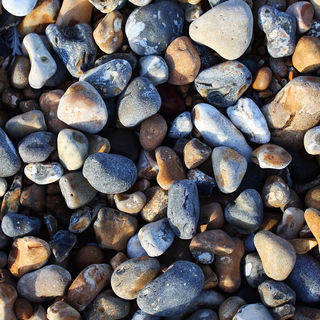Self-Harm
15 Things to Do Instead of Self-Harming
Tried and tested coping skills that actually work.
Posted August 7, 2017 Reviewed by Lybi Ma
Key points
- Some studies have found that as many as 20 percent of high school students and 40 percent of college students have self-harmed.
- It does not work to simply replace self-harm without understanding what fuels the urges for the behavior.
- Tracking one's urges to self-harm throughout the day and then describing those urges can help them not continue to fester.
Guest post by Lauren Coe, M.S. Ed.
Self-harm is undoubtedly prevalent in our society—especially among young people. It's difficult to know just how many people engage in self-harm, but some studies have found that as many as 20 percent of high school students and 40 percent of college students have self-harmed. I began self-harming in high school and for years, I did not know how to replace the behavior with something else. This makes me wonder how many other young people are out there, thinking the same thing.
This is a difficult post for me to write because the concept of using something other than self-harm to cope seemed foreign to me until recently. I have worked with multiple therapists and psychiatrists, been in different support groups, gone through intensive outpatient programs, and undergone dialectical behavior therapy (DBT), all of which attempted to teach me healthier forms of coping. The problem was that all of those coping skills didn't help in the moments when I wanted to cut. I think this has a lot to do with a few different things; first, I wasn't necessarily ready to stop cutting myself, and second, some of these skills were not addressing the core reasons that I was cutting.
My first piece of advice, then, is that it's extremely important that you determine the reasons you hurt yourself before you can begin to replace the behavior with something else. I know from experience that it does not work to simply replace self-harm without understanding what fuels the urges for the behavior. In fact, in their book Freedom from Self-Harm, clinicians Kim L. Gratz and Alexander L. Chapman argue that taking self-harm away without something healthy to replace it with is a recipe for failure.
So before you take on this list below, explore your urges to self-harm and where they come from. Try to identify certain feelings, places, or situations that trigger the urge. Gratz and Chapman encourage thinking about why you want to harm yourself and what you'd get out of it. Thinking about these things will better prepare you to explore alternatives to self-harm.
1. Change your surroundings.
Self-harm thrives on repetitive patterns. For example, you might have a specific thing you use to self-harm, a time of day you often do it, and a place where you feel comfortable self-harming (like your house or your room). If you're in that place and you're experiencing an urge, get out. Go outside, go downstairs, upstairs, or leave the place entirely. Chances are you won't end up hurting yourself if you've removed yourself from that space.

2. Cry.
We can all benefit from a good cry. We are lucky because our bodies are equipped with this natural form of dealing with tough feelings. Release the emotions that urge you to self-harm by crying. There is nothing weak or shameful about crying so find someplace quiet and safe and let it all out.
3. Wash the dishes.
I have found that this tedious household chore can be actually very meditative and soothing. Buy a dish soap with a scent that you really love, get a sponge and some good dish gloves, and listen to a podcast while you wash. Really focus on what you're doing. Let your mind get lost in the scrubbing movements, watch the suds foam up and dissipate, and take your time.

4. Listen to a playlist.
Create a playlist to fit every feeling: depressed, angry, nostalgic, in love, excited, etc. When you're feeling an urge to self-harm, choose a playlist and listen to the entire thing on repeat. Let yourself cry to the sad songs and dance to the upbeat ones. Maybe play songs from your middle school years that remind you of simpler times. Let the music help you release your emotions.
5. Clean your room.
You don't need to embark on cleaning your entire room but sometimes reorganizing your dresser drawers can feel really good. Decide to conquer at least one thing in your room whether it's changing the sheets on your bed or cleaning out your closet. Maybe even make a bag of clothes you want to give away. Cleaning will help keep your mind focused and you'll also be accomplishing something productive.
6. Wash your arms (or another part of your body).
A friend recently shared this with me when I texted her while experiencing a strong urge to cut myself. She has a favorite body wash that she uses to wash her forearms when she experiences an urge. This helps with the sensory feelings in that area of her body and she also likes the scent of the body wash. I took her advice one night when I felt an urge to cut. While in the shower, I scrubbed my forearms with a body wash that I like and I closed my eyes and cried. At first, I was scrubbing very hard, and eventually, I found myself gently massaging my arms as the soap suds washed off. The whole experience was actually very soothing and healing for me.
7. Write about the urges.
You can do whatever you want to with this one. I have found all kinds of writing helpful when dealing with the urge to self-harm from creative writing to structured prompts. In their book, Gratz and Chapman suggest tracking the urges to self-harm throughout the day and then describing the urges. This has actually been very helpful in identifying when my urges are the strongest and how they feel. It's good to be as descriptive as possible. Sometimes the urge to self-harm can feel like a volcano erupting in my entire body and other times it's like an annoying itch that won't go away. Either way, it's better to put these feelings into words rather than let them fester inside.

8. Hold something in your hand.
Find something small that will fit in the palm of your hand. I have a small rock that my therapist gave me that she found on the beach. It's a light color, it's very smooth, and it isn't heavy so I carry it around in my purse with me. For me, an urge to cut is usually associated with not feeling grounded. Cutting myself typically helps me to feel grounded again. However, holding the rock in my hand or something else (Play-Doh, a stress ball, a fidget cube) can help create the sense of feeling grounded and which helps to move me away from the urge. Try to keep something small with you at all times, just in case.
9. Move around.
If you've been sitting down for too long, get up and walk around. Maybe do a yoga stretch or bend over and let your arms fall to the floor. Take a walk (or a run) and get your body moving. You can even just shake your hands and arms to simulate getting the urge out of your body. it will be harder to hurt yourself if you're moving around.
10. Hug something you love.
When I was in high school and I felt an urge to cut, I would find my family's cat and bring him into my bedroom with me. I would sit on my bed with him, pet him, hold him, and kiss him. Being able to hug him and feel his presence next to me was always very comforting. Hugs symbolize holding and holding symbolizes caring. If you can hug someone you love, your pet, or even a stuffed animal, the act of hugging is healing and can help offset the urge.
11. Scream and yell.
Scream into your pillow. scream in your backyard. Yell at the TV, or the car, or maybe imagine yelling at someone you don't like. Obviously, always be aware of your surroundings before you start screaming out all of your aggression. Put a voice to those feelings rather than a scar.

12. Name your feelings.
This might seem simple but I actually find it somewhat difficult. Try to be as specific as possible with yourself when you try to name your feelings. My therapist has helped me a lot with this. You might be feeling anxious but is there something else underneath the anxiety? For me, it's usually anger or fear of abandonment. Once I'm able to name how I'm feeling, my urge to self-harm loses some of its control over me.
13. Call or text a trusted person.
Even if there is just one person in your life who you can trust to talk to about your self-harm, reach out to them. Ask them if they would be willing to talk or go out somewhere. Identify who this person (or people) will be ahead of time and have a backup plan if they don't answer. I reach out to my therapist when I have an urge to cut and even if she doesn't write me back immediately, I feel a sense of relief by reaching out to her. Just knowing that she will receive my text makes me feel less alone.
14. Wait 20 minutes.
My therapist recently told me about this one. She said that when I'm feeling an urge to cut if I can wait 20 minutes the urge will lessen and eventually pass. I can distract myself by making something to eat, taking a shower, or watching some TV. If you can make it through those 20 minutes, you'll be okay.
15. Let go of control.
A friend and I recently discussed how control relates to our self-harm. We both have a long history of cutting ourselves and we realized that so much of it came from a desire for control. For me, since I wasn't able to control the actions of those around me or even control my own intense feelings, at least I was able to control how and when I cut myself. I have been trying to get better at being okay with not having control. Always being in control means too much power and it's unrealistic. It can actually be a relief to let go of control and just let yourself feel whatever you need to feel. You'll get through it, I promise.
Facebook/LinkedIn image: Rawpixel.com/Shutterstock




